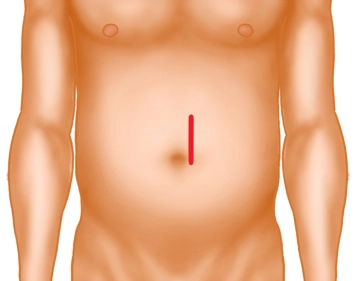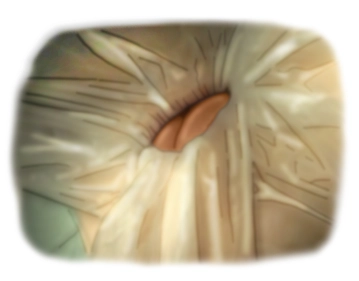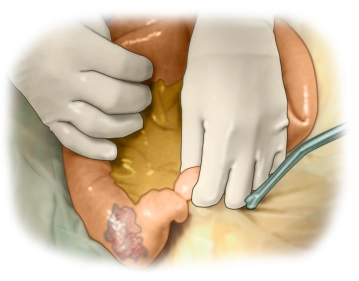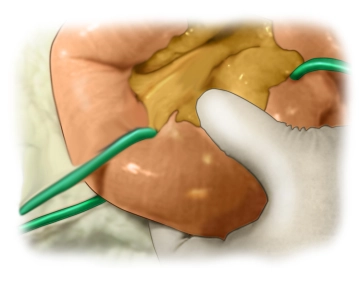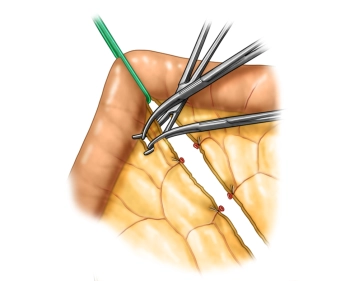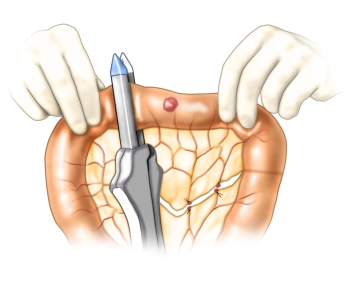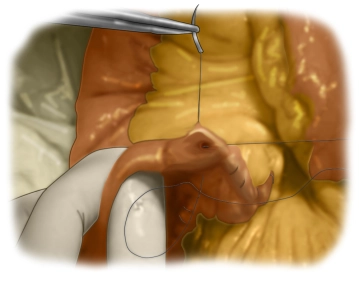Small median laparotomy, depending on the location of the findings in the small intestine either superior, periumbilical or inferior to the umbilicus.
It should be noted that laparotomies in the lower abdomen result in better cosmesis. The initial skin incision should be about 8 cm long. This usually suffices to exteriorize the small intestine but, if necessary, the skin incision can be extended. As a rule, any incision involving the umbilicus should skirt it on the left.


